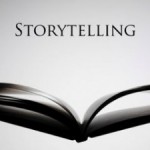
Teaching through the art of storytelling creates a medium for the listening mind to activate in a linear, flowing manner. Before I go on, I must offer that every brain is created and works differently. As such, I’ll speak to general trends and information on the brain and its workings in relation to learning. (Also, I’ll refer to the brain as the “mind,” as it’s more appropriate for our conversation.)
Listening is central to the growth and development of most human beings. Studies show that 85 percent of what we know we’ve learned through listening (Shorpe). Yet we only remember 20 percent of what we hear and 75 percent of the time we’re distracted, preoccupied, or forgetful (Hunsaker). So, we understand that listening is really important, but it can be a highly inefficient way to transfer information depending on the mode of communication. Some argue that offering convincing statistics engages the listener and creates lasting impact, but studies also tell us that people quickly dismiss statistics that are inconsistent with their beliefs (Graesser).
But fictional stories—which can be processed very efficiently with minimal effort and high recall—offer “suspension of disbelief,” which can lead to tangible change (Bower & Graesser). For this reason, some in the medical field have implemented storytelling as a mode of healthcare communication, bringing attention to issues such as suicide to AIDS prevention.
So we’re left with story—the telling of which can break down walls of cynicism and mental distraction and lead listeners toward engagement. The art is in assimilating fiction into belief, which why intentional dialog and discussion is pivotal to its success.
The above is a brief excerpt from my book Teaching Through the Art of Storytelling. Also available to pre-order in paperback at youthspecialties.com.